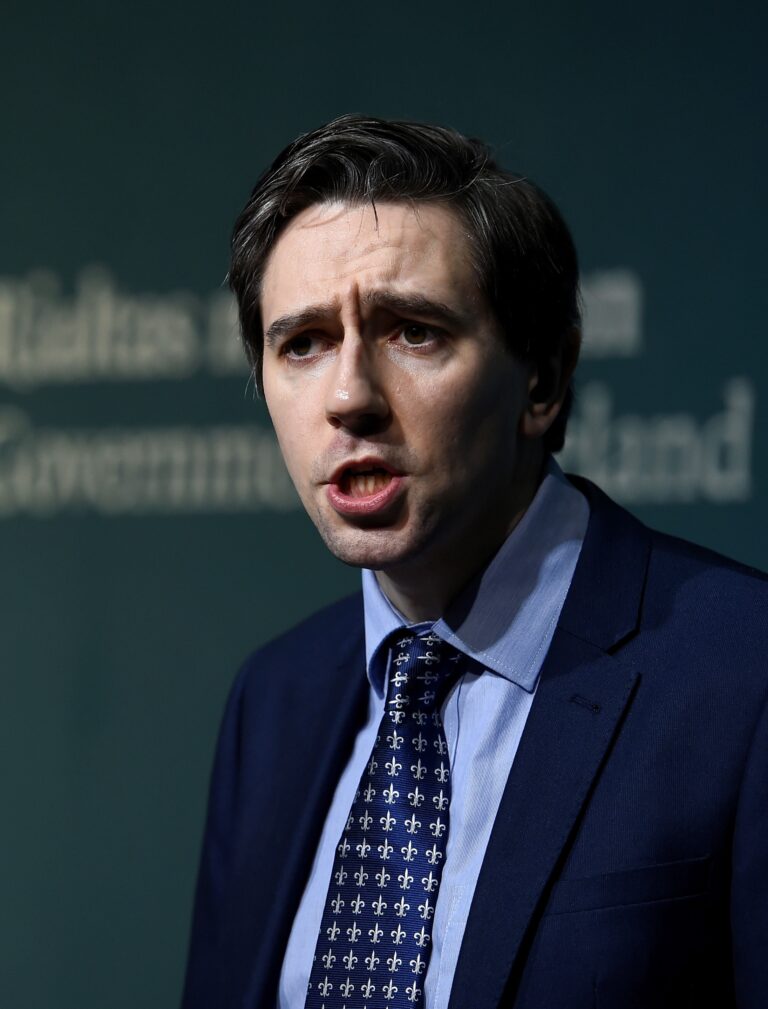It is now a familiar story. A young media darling in a rush to the top is installed as the leader of Fine Gael and the country – without the electorate having a say in the matter.
Mirroring Leo Varadkar’s meteoric rise to Taoiseach, Simon Harris is set to become Ireland’s youngest ever leader at the age of 37. Media portrayals burst with youthful virility, energy and potential. However, energy aside, the public has no idea what the new man foisted upon them stands for.
In July 2017, then new Taoiseach, Leo Varadkar, graced the cover of Time Magazine. In an accompanying interview he separated himself from Fine Gael’s past and the traditional European Christian Democrat model by laying out a new vision for Ireland.
“We… side with the right on economic issues, in that we are for balanced budgets and free trade and open market economies. Perhaps we are slightly to the left on other issues, such as the role the government has on redistributing wealth, in personal freedoms… [we] believe migration on balance is a good thing if it is managed properly, and believe that multilateralism is the best way to solve problems.”
While the electorate had no say in this new direction for Ireland, at least he had a vision. In the years that followed, Varadkar dragged the party and nation hard-left socially, courting taxpayer funded NGOs and a compliant national media to cultivate consensus for his social agenda.
Varadkar publicly came out as a gay man in support of the 2015 same sex marriage referendum, stating that he wanted to “be an equal citizen in my own country”.
The backslaps he received nationally and internationally for coming out, and the wall of NGOs he surrounded himself with while in power, emboldened him to overturn Ireland’s abortion ban, allow same-sex parents put both of their names on the birth certificate of a child born via surrogacy and provide amnesty for some 17,000 illegal immigrants resident in Ireland.
With Fine Gael’s economic policy largely on auto-pilot by simply continuing Fianna Fail’s Celtic Tiger 12.5% corporation tax model, Varadkar’s reign was defined by his radical social policy.
The post bailout economic boom allowed Varadkar to import massive numbers of low-skilled foreign workers from both the EU and further afield while word also got out that Ireland was a soft touch for immigration control and deportation.
By 2022 almost one million – or one in five – people in Ireland were foreign-born. But not all migrants are equal.
Varadkar was adept at blurring the line between legal, gainfully employed economic migrants, legal EU migrants travelling without the intention of taking up gainful employment, and illegal economic migrants posing as refugees to claim state benefits.
Official numbers from the Central Statistics Office for the first quarter of 2023 showed that 23.8% of unemployed individuals on social welfare were non-Irish. An astonishing 83.3% of Roma were unemployed.
Those members of the public who tried to distinguish between legal economic migrant and illegal were labelled racist by politicians, NGOs and the media even though a FOI request from the Dept of Justice showed that in 2023, 85% of all asylum claims coming through Dublin airport were made by individuals who had no or forged identification.
To cap off his reckless migration policy, Varadkar’s government took over 100k Ukrainian refugees into the country despite not having the facilities to house them.
Varadkar’s last years saw a spate of attacks, inner-city violence in Dublin and brutal murders by poorly integrated and long-term unemployed non-Irish men.
A spontaneous riot alongside a string of fires at proposed migrant settlement centres around the country in late 2023 and early 2024 laid bare the cost of Varadkar’s soft touch on open borders and crime.
Ireland was literally burning. However, Varadkar doubled down on silencing dissent. In the immediate aftermath of the Dublin riot he promised to rush through the Orwellian Hate Speech Bill that would clamp down on freedom of speech on social media. He never got that far.
On Friday, March 8, with the devastating electoral rejection of two of the most nakedly activist-driven referenda in modern Ireland, Varadkar’s social agenda was crushed, and off he shuffled.
In stepped the new and improved media wunderkind. “The ‘young pup’ set to become Ireland’s new ‘TikTok Taoiseach’,” The Daily Mail drooled. “Simon Harris was only a teenager but we had already dubbed him the Future Taoiseach,” The Irish Independent squealed. Yes, he’s young and he knows how to use TikTok but what does he stand for? This time, the country is going in blind.
Harris joined the party at 16 and became the youngest ever member of the Dáil at 24. He has been cocooned inside of the halls of government his entire adulthood and has limited life experience outside of politics.
More than any leader before him, Simon Harris will be a product of the political class. And during his apprenticeship in government, he did not break from Varadkar on any of his hard-left social policies.
As Minister for Health he supported abortion and introduced the legislation to the Dáil after the referendum victory. Again, he introduced the legislation to allow same-sex parents put both of their names on the birth certificate of a child born via surrogacy.
Harris was an enthusiastic supporter of Varadkar’s LGBTQ+ agenda, attending a Dublin Pride parade in 2018. He labelled demonstrations against the Government’s poor handling of mass migration “thuggish, mobbish and intimidatory behaviour”.
After the Dublin riots, he forcefully advocated for the implementation of the Hate Speech Bill.
So who is Simon Harris? The evidence points at best to a weak acquiescing yes man who fell in line with Varadkar’s most radical social policies; or at worst, a Varadkar protege incubated, nursed and weened on the party teat inside the chambers of government with precious little life experience to draw from.
It’s a hell of a gamble to take on the leader of the nation.
There is of course a path forward for Harris. During his leadership acceptance speech he told the party faithful that “Fine Gael stands for law and order”.
After the lawlessness of the Varadkar years, this statement seems ludicrous but it may well be his best way to cut with the past and present himself as a leader more in line with the party’s grassroots expectations.
When, as expected, Simon Harris takes on the role of Taoiseach after the Dáil Easter break he will soon thereafter be given one of his few chances to stake his longterm claim to party leadership and to rally the base ahead of Local, European and General elections – a cabinet reshuffle.
The strongest statement that Harris can make is to remove the deeply unpopular Helen McEntee from her role of Justice Minister. She is the principle advocate for the internationally derided Hate Speech bill and domestically divisive EU Asylum Pact.
McEntee, a generous NGO benefactor, is the most contentious hangover from the Varadkar years and by firing her, Harris could, in one fell swoop, banish the ghost of Varadkar’s hard-left social agenda and NGO overreach.
In an exceedingly narrow set of options open to him, this one move would buy him time and some favour with the party base. It will not win him the next General Election but it would provide him a foundation on which to rebuild.
Dr Eoin Lenihan is an independent journalist and researcher. His work has been featured on AlJazeera and Fox News.



